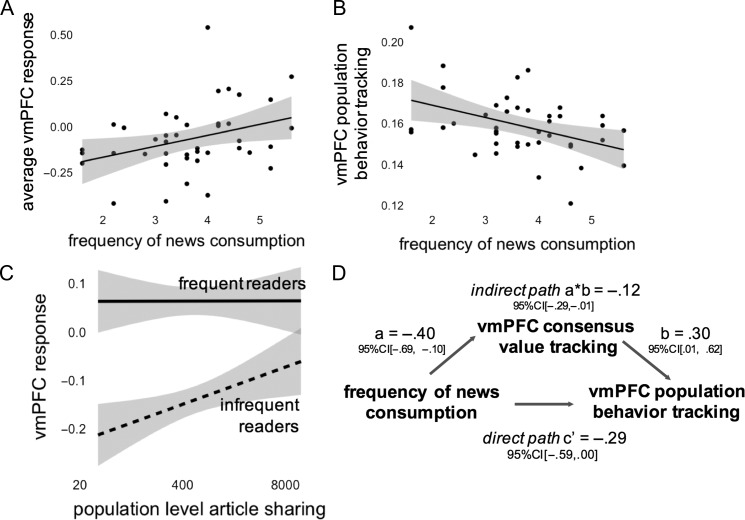Figure 3.
News reading frequency moderated vmPFC tracking of population behavior. (A) Participants who reported frequently reading news in daily life tended to have higher vmPFC responses to the news articles on average (y axis reflects average vmPFC activity). (B) infrequent readers tended to have better vmPFC tracking of population article sharing (y axis reflects vmPFC population behavior tracking). (C) The overall pattern of data indicated that news consumption frequency showed a moderating effect; frequent news readers (top 33%) tended to show high ventromedial prefrontal cortex (vmPFC) responses across all articles, whereas infrequent readers (bottom 33%) tended to show high vmPFC only to articles that would be heavily shared. (D) The person-to-person relationship between news reading and better vmPFC tracking of population sharing was mediated by better vmPFC tracking of consensus value ratings. See also Supplemental Figure S4.

